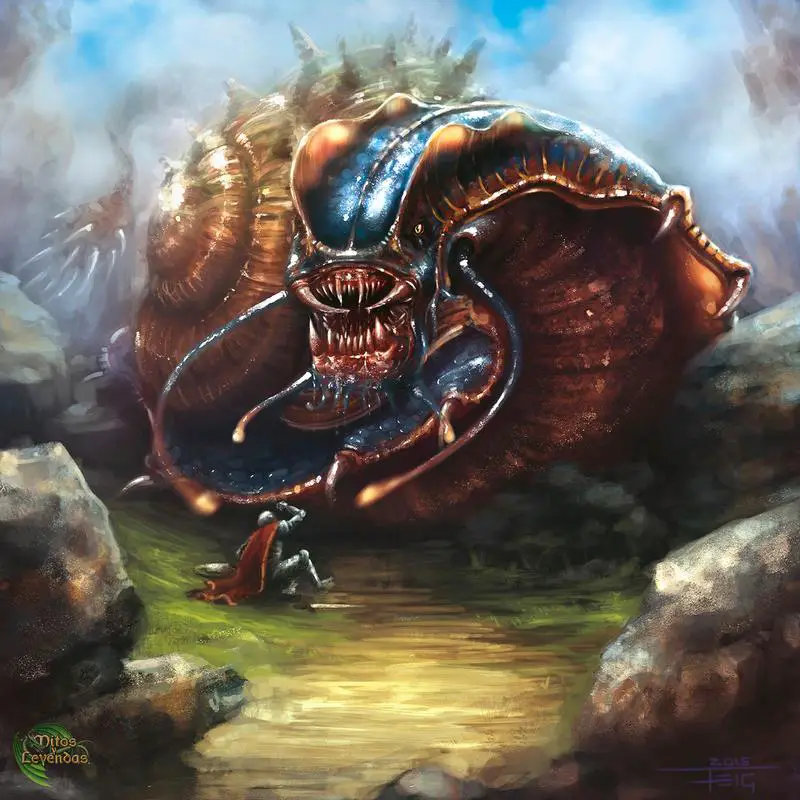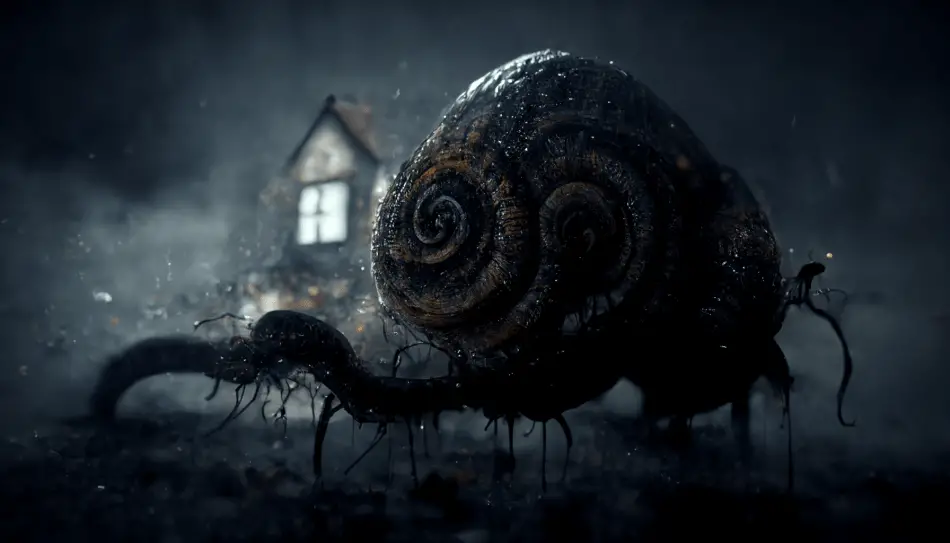Share the Lore!
By: Alex Postrado
Lou Carcolh: The Serpentine, Snail-like Giant from French Lore
Mythology and folklore have no shortage of bizarre monster “hybrids“.
And one of the reasons for the lingering presence of these creatures in stories is, perhaps, the fact that they undeniably make for a hooking narrative — bonus points for the scare!
We have heard about the centuries-old reign of the serpentine Cockatrice.
We also have knowledge about the utterly-monstrous, snake-tailed Chimera.
And who isn’t familiar with the quite literally mind-blowing birth story of Pegasus — how the winged stallion sprang from the blood of the Gorgon Medusa’s severed head?
It isn’t a secret that monsters like these add another layer of both fright and intrigue to each story they appear in.
And just by looking at these examples, it is easy to see how in various folkloric crossbreeds, snakes seem to be an animal of choice.
We have stories about snakes mixed with humans, lions, bulls, goats, dogs, and many more.
But what if it is a meld of a serpent and a mollusk — and, well, multiple times the size!
That is basically what Lou Carcolh is.
A colossal gastropod-like monster from French folklore that has been plaguing people’s fears for at least over a century now.
Yet it is argued by some that the Carcolh may have existed long before that timeline.
Since when exactly? No one knows.
The tale of Lou Carcolh is as mysterious as it gets, but maybe we could learn a bit more about the monster the longer we follow its trail.
The Formidable Snail Beast
A gigantic, snail-like monster — that is the simplest way someone can describe Lou Carcolh.
Arguably among the ranks of the serpent king, the Basilisk, and the legendary sea monster, the Kraken — the Carcolh is said to have once terrorized a commune in the town of Hastingues, in Southwestern France.
The name Lou Carcolh or the Carcolh translates to “the snail“.
Regardless of the name, though, the formidable monster is actually an amalgamation of a snake and some type of mollusk with incredibly long tentacles.
Despite us having this vivid picture of Lou Carcolh, people from Hastingues claim that they have never actually seen the Carcolh up close — since if anyone did, they would likely be dead by now.
But, they talk about its towering height and slimy body, time and time again, in stories.
Along with that, some of the giant’s defining attributes include the huge shell that it carries on its back.
A shell that allows it to hide its true serpent-like appearance, as well as its tendrils that seem to have lives of their own!
Though this repulsive appearance is not the most horrifying detail about Lou Carcolh.
That seat would be snatched by its raving intent to kill and devour every living being it encounters!
You see, the Carcolh is a blood-thirsty giant that loves to feast, not just on animals, but also on humans, for sustenance.
And the way it attacks its victim and drags the lifeless body back to its lair may come seemingly without notice to those who have not heard it all.
Is it Possible to Defeat Lou Carcolh?
As much as it would be great to hear that we actually stand a chance at Lou Carcolh, the resounding answer seems to be pointing all the way to “no”.
Put simply, it seems like there is no overpowering the Carcolh beast.
From its slimy tentacles, presumably impenetrable shell, and enormous proportions — the formidable French legend is a monster that remains yet to be defeated.
The creature has a mouthful of hairy tentacles that are as sticky as they are long — stretching for miles, tainting its path with mucus, and ensnaring anyone and anything within its reach.
It is the slime trail that Lou Carcolh leaves behind that announces its presence.
Once someone strays near the trail, the beast then retracts its appendages to drag the victim into its den, to soon swallow them whole.
Clearly, the stories were not exaggerating when they said that Lou Carcolh’s tentacles were incredibly long. In fact, they were so long that they could stretch far enough to reach a victim that is miles away from the rest of its body’s location!
Although defeating Lou Carcolh is likely out of the question, there is still one thing that could relieve your fears:
The fact that the Carcolh is not fond of daylight.
As to how far that knowledge might save you, we just don’t know.
The Origins of Lou Carcolh
Mythical and legendary monsters are often products of a long-forgotten time.
Yet, in the case of Lou Carcolh, studies found no recorded reference of the creature from before the 20th century — making its lore particularly newer than its supposed contemporaries.
Interestingly, Hastingues — the town most commonly associated with Lou Carcolh — shares its nickname, the Carcolh, with the intimidating beast. And this is due to the rural area being situated on a rounded-shaped hill that sort of resembles the coil of the monster.
In this French commune, the story of Lou Carcolh is still being told today. Thus, the belief in the creature remains rife — especially in more conventional parts of Hastingues.
There is even a local tradition that warns people of a peculiar, winding undergrowth that marks where the Carcolh once slithered. They say that stepping on this brown grass will bring tragedy and misfortune.

In a more positive light, though, believers of the lore claim that there hasn’t been a single sighting of the legendary beast in about 50 years!
Some think that the beast has since died. Others say that it is alive, but is in deep hibernation.
But, as we all know, there is no harm in being careful. Sometimes, it is even the only defense we have got — much like in the lore of Lou Carcolh.
So, maybe don’t wander off too far. And beware of any viscous trail you might encounter outside. Because, as the locals say, “The Carcolh will catch you!”
References:
Lou Carcolh - Cryptid Carcolh - The Mythical Creatures Catalogue Lou Carcolh 15 Creatures from French Folklore to Haunt Your Dreams Tonight
